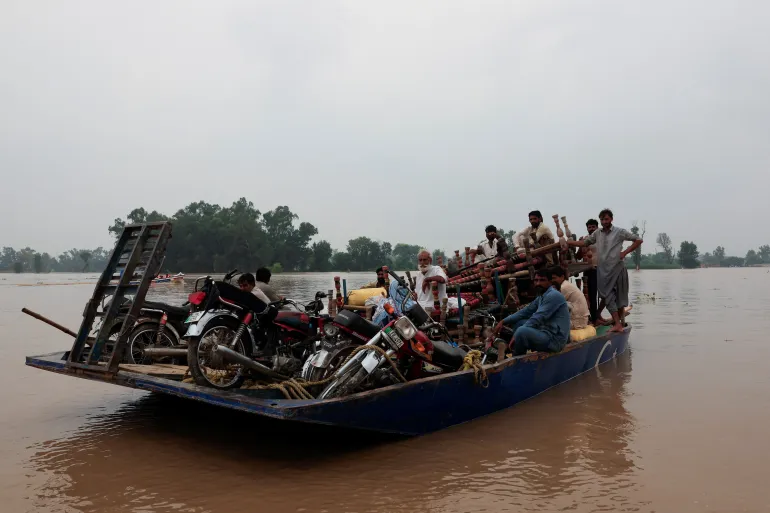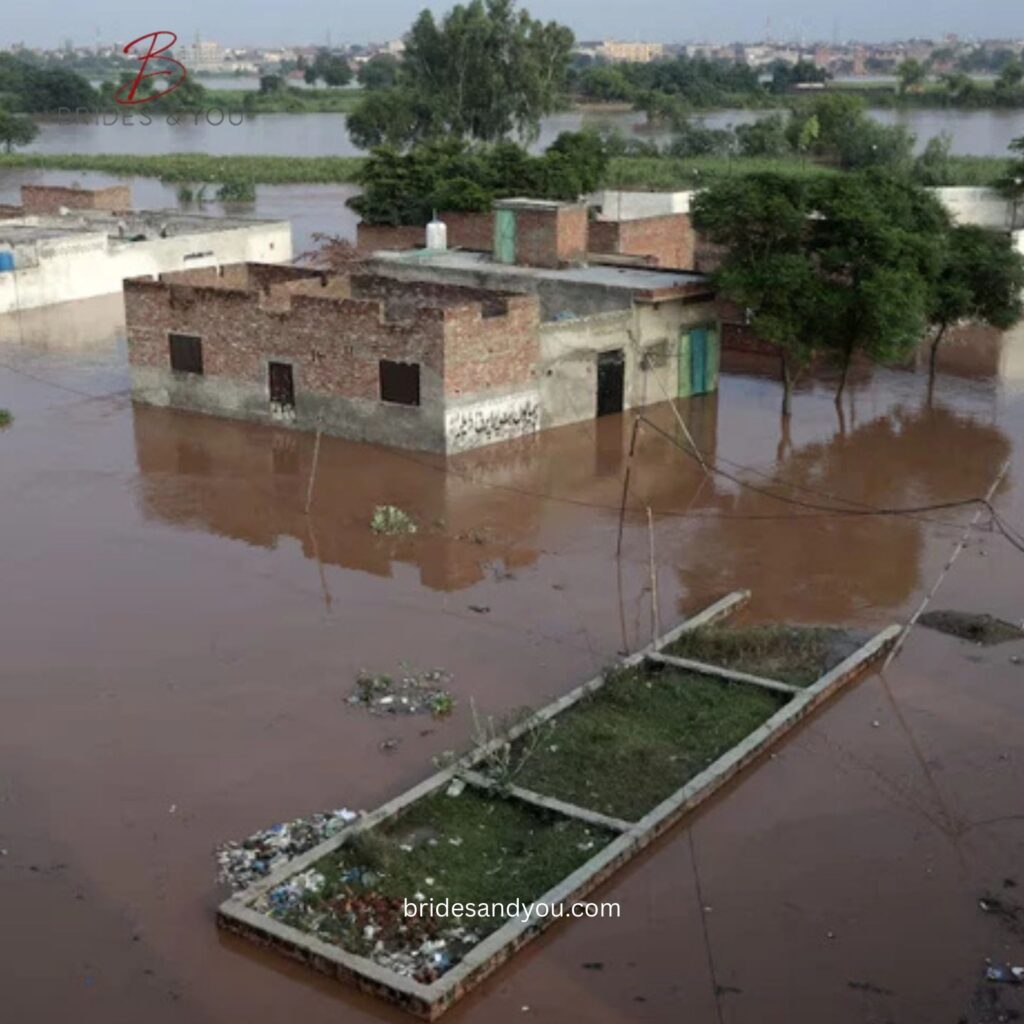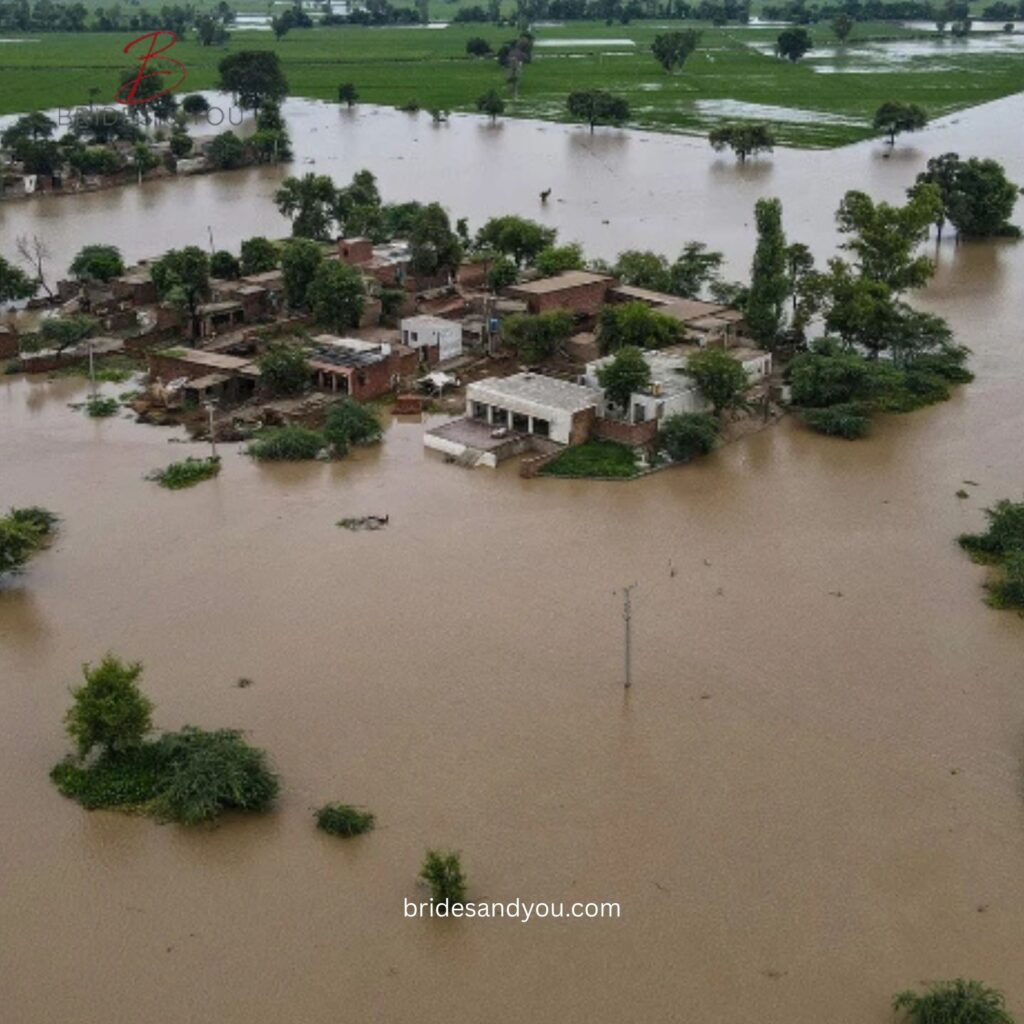Now Reading: Punjab on Tenterhooks as India Unleashes Fresh Deluge
-
01
Punjab on Tenterhooks as India Unleashes Fresh Deluge
Punjab on Tenterhooks as India Unleashes Fresh Deluge

Punjab is once again facing one of its most dangerous flood situations in recent history. After days of torrential monsoon rains, the situation has turned critical as India released a massive surge of water from the Salal Dam without prior notice. According to the Provincial Disaster Management Authority (PDMA), nearly 800,000 cusecs of water are heading towards the Chenab River, raising fears of a “super flood” across multiple districts.

PDMA’s High Alert Across Punjab
The PDMA Director General, Irfan Ali Kathia, warned that the next 36 hours are crucial for Punjab. Authorities fear extremely high flood levels at Head Marala, where the Chenab’s water level is expected to rise dangerously.
So far, over 2,200 villages have been submerged, and the number of affected people has crossed 2 million. Rescue agencies and the army are already in the field, conducting relief and evacuation efforts. Despite these efforts, the scale of destruction is expanding with every passing hour.
Widespread Flooding Across Major Rivers
The release of water from Salal Dam has worsened an already dire situation. Heavy flooding has been reported in the Sutlej, Ravi, and Chenab rivers, where embankments have been breached, flooding both rural and urban settlements.
- Bahawalpur: Thousands of acres of crops have been destroyed, with villagers forced to evacuate with their livestock.
- Narowal & Nankana Sahib: Floodwaters have destroyed farmlands and entered towns, leaving families stranded.
- Lahore: Key areas like Mall Road, Gulberg, and Davis Road are under water. At least 18 schools are sheltering displaced families.
Punjab’s Flood-Hit Communities Struggle to Survive
In Chiniot and Jhang, hundreds of villages are under 8–10 feet of water. In Dera Ghazi Khan, washed-out roads have cut off access, forcing people to rely on boats for food and supplies.
The government has turned schools into relief shelters, yet the facilities remain overcrowded. With families bringing only bedding and basic utensils, many shelters lack clean drinking water and sanitation facilities. This has triggered outbreaks of cholera, diarrhoea, dengue, malaria, and skin infections. Doctors warn that children and the elderly are especially vulnerable.
South Punjab Braces for More Floods
The PDMA has warned that the flood surge is moving towards southern Punjab districts. Around 140 villages between Khanewal and Jalalpur Pirwala are in direct danger. Despite final evacuation warnings, many villagers remain reluctant to leave their homes.
At Head Muhammadwala, water levels have already crossed 200,000 cusecs, and authorities fear the situation could worsen as inflows increase. Officials have even identified breaching points to protect Multan if the pressure becomes unmanageable.
Adding to the crisis, 70,000 cusecs from the Ravi River have joined the Chenab, putting downstream districts at greater risk.
Sindh and Khyber-Pakhtunkhwa Also Under Threat
The flood surge will not stop in Punjab. Sindh is bracing for the floodwater that will eventually pass into the Indus River. Sindh officials warn that 1.65 million people across 15 districts could be affected once the water reaches their villages.
In Khyber-Pakhtunkhwa (K-P), five people, including four children, have died due to flash floods and heavy rainfall. Since mid-August, extreme weather events have claimed over 400 lives in the province, damaging thousands of homes.
With Tarbela Dam at full capacity and Mangla Dam at 82%, officials warn that there is very little margin left to absorb further inflows.
The Human Cost of Punjab’s Super Flood
Punjab’s Senior Minister Marriyum Aurangzeb has described the disaster as a “super flood”, affecting more than 2 million people. Over 750,000 have been displaced, while crops, livestock, and homes have been swept away.
The coming days remain uncertain as both weather forecasts and water levels continue to paint a grim picture. With more heavy rains predicted until September 3, the province remains on tenterhooks, praying for the floodwaters to subside before more damage is done.
Conclusion
The fresh wave of floods has reminded everyone of how vulnerable Punjab remains to both monsoon rains and sudden water releases from across the border. As communities struggle to survive, it is clear that the coming days will test the province’s resilience and unity.













